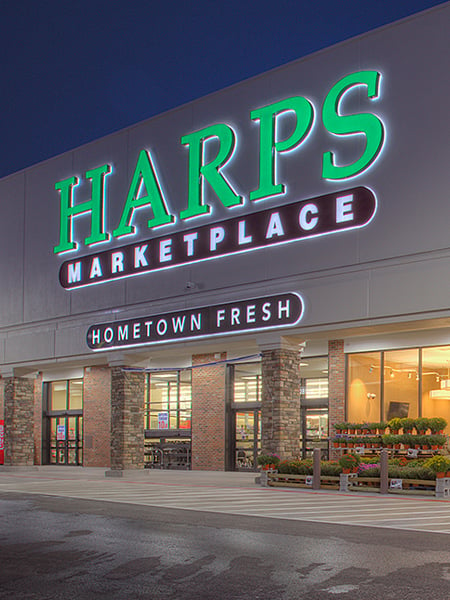4 metrics that drive store performance
by Sean Oliver, on March 3, 2020

For the past decade or so, “data-driven” performance has been much-discussed across businesses of all shapes and sizes. But what does this trend really mean to organizations that rely heavily on deskless workers who interact with customers face-to-face? Larger enterprises in people-centric industries like restaurant, retail, and hospitality, often struggle with the intangibles of managing these kinds of frontline operations at scale. Quantitative data can drive significant value—especially for corporate human resources (HR) or operations execs who focus on implementing improvements across multiple stores or regions—by providing them with actionable insights for benchmarking and calibrating enterprise-wide performance.
One engineering and construction business in Asia recently embarked on a four-year journey to establish a more data-centric culture across the business. Despite a heavy reliance on deskless field workers, L&T Group’s CEO told Harvard Business Review that the strategy they developed over those four years helped the company increase worker productivity by 15%. He shared some valuable lessons that any business could benefit from, noting the importance of:
- Focusing on improvement over punishment to minimize “big brother” concerns,
- Measuring only what’s really important to avoid data fatigue, and
- Communicating the benefits of the data.
“Employees need top-down reminders to think “data first,” and their efforts to do so need to be recognized. Don’t take for granted that employees should be able to see the data-driven improvements all around them. Communicate when benchmarks are established and where there are improvements in key metrics,” stated the HBR article.
But what metrics should service businesses use to increase performance across hundreds or thousands of locations, each with varying levels of data literacy or other digital skills? Here are four key areas where ops and HR leaders can easily leverage data to motivate exceptional performance from managers and their teams.
1) Engagement and retention
Employee engagement and retention are top of mind for most leaders, especially during peak retail and hospitality seasons like the summer or holidays. However, without being on the ground at every location each day, it’s challenging for corporate execs to keep their fingers on the pulse of frontline sentiment. A couple helpful techniques: review the usage data from any mobile communications apps your stores use, or leverage these frontline tools to execute short, simple surveys that give you rapid feedback. By comparing engagement trends across specific locations, you can more quickly spot any weak points and address them before retention takes a hit.
For example, if you notice that one store experienced a dip in employee satisfaction levels, average number of digital messages shared per week, or its turnover rate for a certain employee type (i.e. managers, shift leaders, entry-level staff), you’ll want to check in with the relevant area coach and manager to see what’s going on. Share the data with them, reiterate established goals, and offer some best practices that high-performing locations have used to help drive those numbers up.
These might include suggestions as simple as helping people feel like part of the team by celebrating staff birthdays, increasing informal recognition of good work, or offering training refreshers surrounding certain tasks or shifts.
2) Training participation
Speaking of training, it only works if staff and managers internalize your content versus just going through the motions (or worse, getting too busy and ignoring learning and development requirements all together). To stay on top of this at the enterprise level, monitor participation rates for each type of training you offer—onboarding, seasonal promotions, quarterly or annual courses (e.g., food handling certifications). But rather than just focusing on raw completion numbers, dig a little deeper by randomly quizzing participants on your more in-depth content, or tracking views and reactions to mobile announcements for things like limited time offers.
It’s helpful to know how many people at each location have reviewed your training materials, and whether they engaged directly with the topic at hand by asking questions or commenting. If these data points indicate that your training materials might be getting lost in a black hole, identify managers that need to do a better job at cascading information from corporate.
Depending on the types of training, you might offer tools that make it easier for managers to distribute your company’s learning and development offerings, or you can leverage company-wide communications tools to take the burden off managers and ensure that every frontline employee receives the information at the same time. And since high training participation rates can be a great indicator of engaged, dedicated talent, these metrics can help you find people who deserve additional opportunities for career development.
3) Recognition frequency and recency
Future leaders often come directly from frontline teams, so development and recognition is especially crucial for your highest potential employees. Identify who these people are, and monitor their engagement, recognition, and turnover levels, so you’ll be able to uncover retention risks before they become major issues. Similar to training metrics, look at your recognition data across the various programs your business uses for motivation, whether that’s employee of the month, timely mobile awards, or contests for key metrics like speed-of-service.
By staying informed about who’s receiving recognition and how often, you can benchmark these practices across locations and individuals to both discover top talent, and coach managers to spread the love to team members who may be inadvertently under-recognized. If you notice certain locations that aren’t using employee recognition tools frequently or regularly enough, consider putting some of those tools into the hands of frontline employees, so they can support and celebrate their peers directly, rather than waiting for inconsistent manager recognition.
4) Scheduling compliance
Another very important lever of performance for all frontline-driven businesses is how well they do with planning, disseminating, and updating shift schedules to maintain the right labor-to-sales ratio. Employees are more likely to show up for shifts and work harder when they feel valued by having some flexibility and control over their work schedules. This is a big reason for the push towards predictive scheduling mandates across many local and state governments. In addition, having the right number of people working each shift is crucial to delivering a consistent, high-quality customer experience. Given these considerations, all corporate leaders benefit from visibility into their store’s scheduling practices.
Important data points to monitor include instances of late schedule postings by managers, numbers of shift cover or time-off requests over certain time periods, average time it takes each store to cover an open shift, etc. When you notice that certain teams are better at successfully finding shift coverage, figure out why that might be—is it related to the number of employees they have, how early or often they post coverage requests, the tools they use to manage schedule changes, etc.? Understand what works and what doesn’t work when it comes to scheduling, and focus on helping teams continuously improve these tactics at each location so that you can keep your employees, customers, and regulators satisfied.
Of course, there are several other HR metrics you can dig into as you take steps towards improving operations and performance over time.
What types of data do you find most helpful for your business? Tweet us @Crew_App to contribute to conversations around the future of the data-driven frontline workplace.
Photo by Adeolu Eletu onUnsplash


